Harriet Anstruther's 'magical' garden in West Sussex is 'a seductive, deeply comfortable haven'
Non Morris visits the the West Sussex home of Harriet Anstruther and Henry Bourne, and discovers a garden that has been brilliantly designed to make you want to stop and simply enjoy its loveliness. Photographs by Éva Németh.
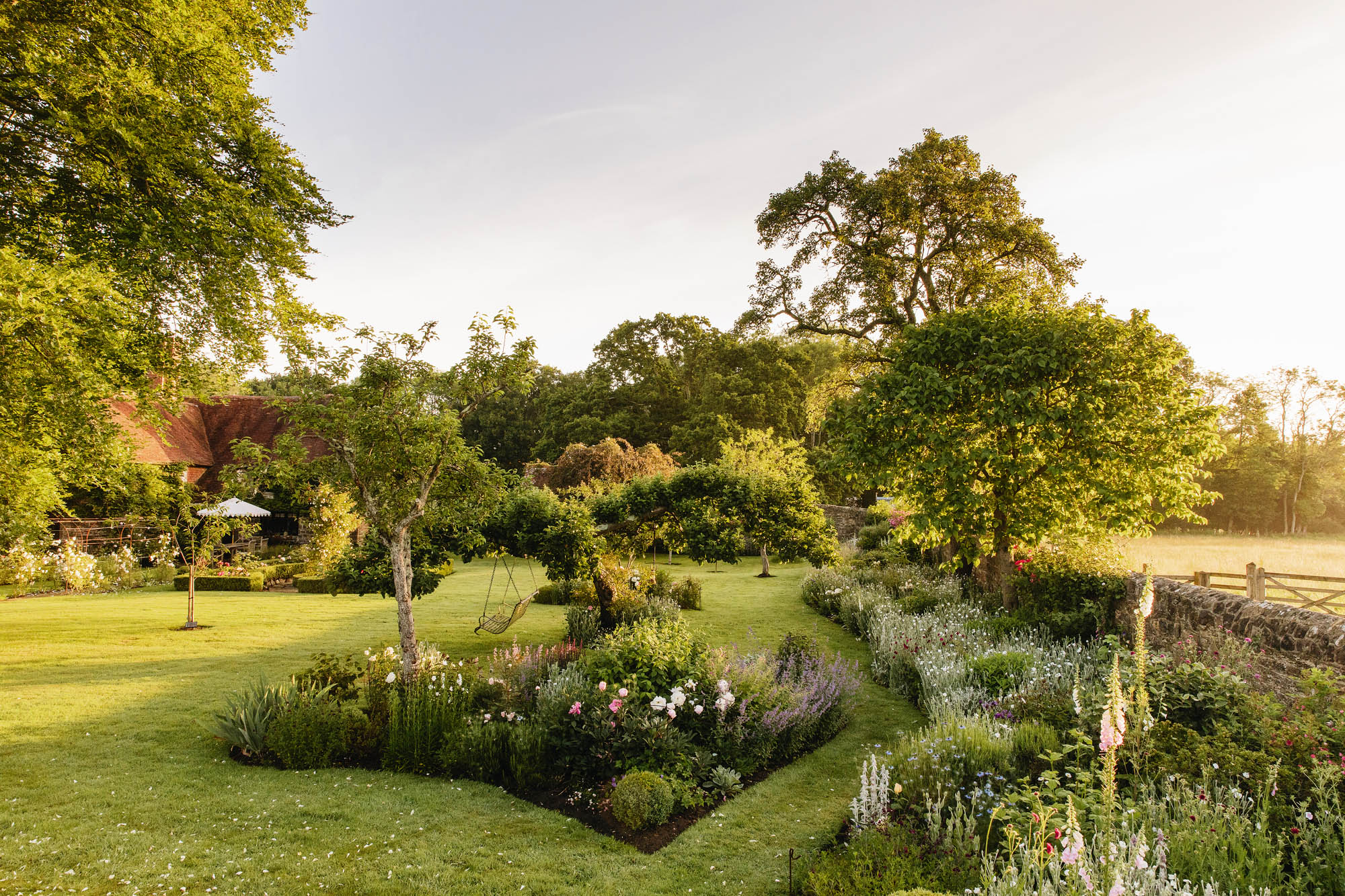

'The thing I most love about the garden is that it has a magical quality. It had a very remarkable feel to it, even when I first took it on. I had noticed this atmosphere as a child when we used to visit the farmer who lived here.’
Interior designer Harriet Anstruther acquired the collection of dilapidated buildings and overgrown yards — a former livery and stables — close to her family home in West Sussex 25 years ago and has transformed it into a seductive, deeply comfortable haven. To get there, you disappear ‘down a lane, off a lane’ and find yourself arriving at a rambling, steep-roofed hamlet, a perfect small estate with the central two acres of groomed gardens edged with expanses of wildflower meadow, the whole embraced by sheltering woodland.
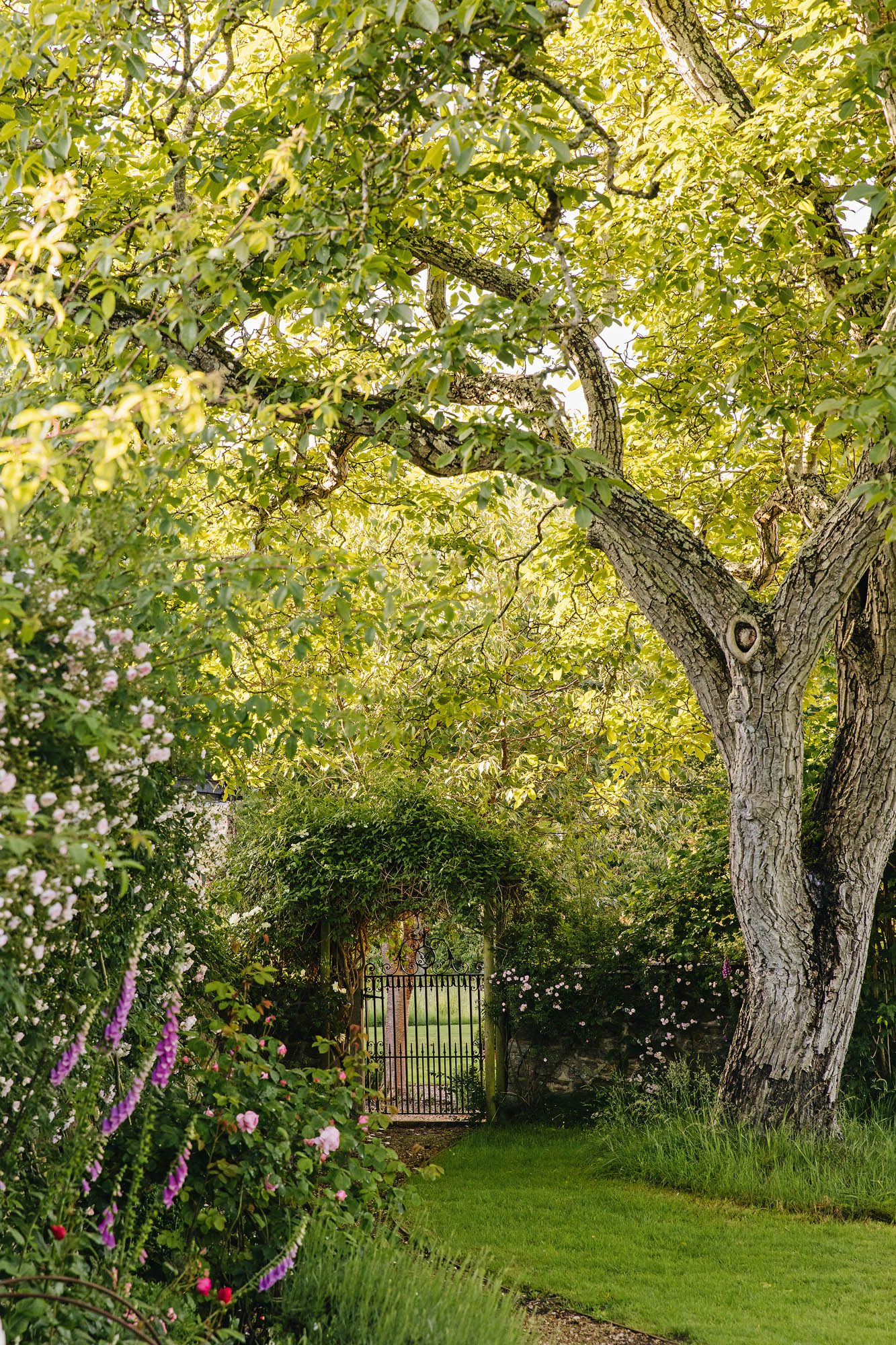
Ms Anstruther spends three months a year working under dazzling blue Los Angeles skies in California, US, and is clear that a passion for rock music infuses her work — especially Jimi Hendrix’s Axis: Bold as Love, which is ‘quiet, but powerful, bold, but beautiful’ — but her heart is deeply rooted in the English countryside. ‘I grew up in woodland. We didn’t have a television as kids, so we spent all our weekends wooding with Papa, clearing and building bonfires and planting saplings.’
Over the years, a weekend retreat has become a place to live and work full time, its relaxed and welcoming atmosphere created by layers of found or inherited elements, and plants given as presents or grown from cuttings. The Bothy, which was once a garage, is now an idyllic studio reached by a curving gravel path and a former pigsty is abundant with sculptural artichokes and ‘20 quid’ agricultural feed bins brimming with ferns and agapanthus. Crucially, fences have been removed and the paddock grass left to grow tall, so the whole garden flows and connects.
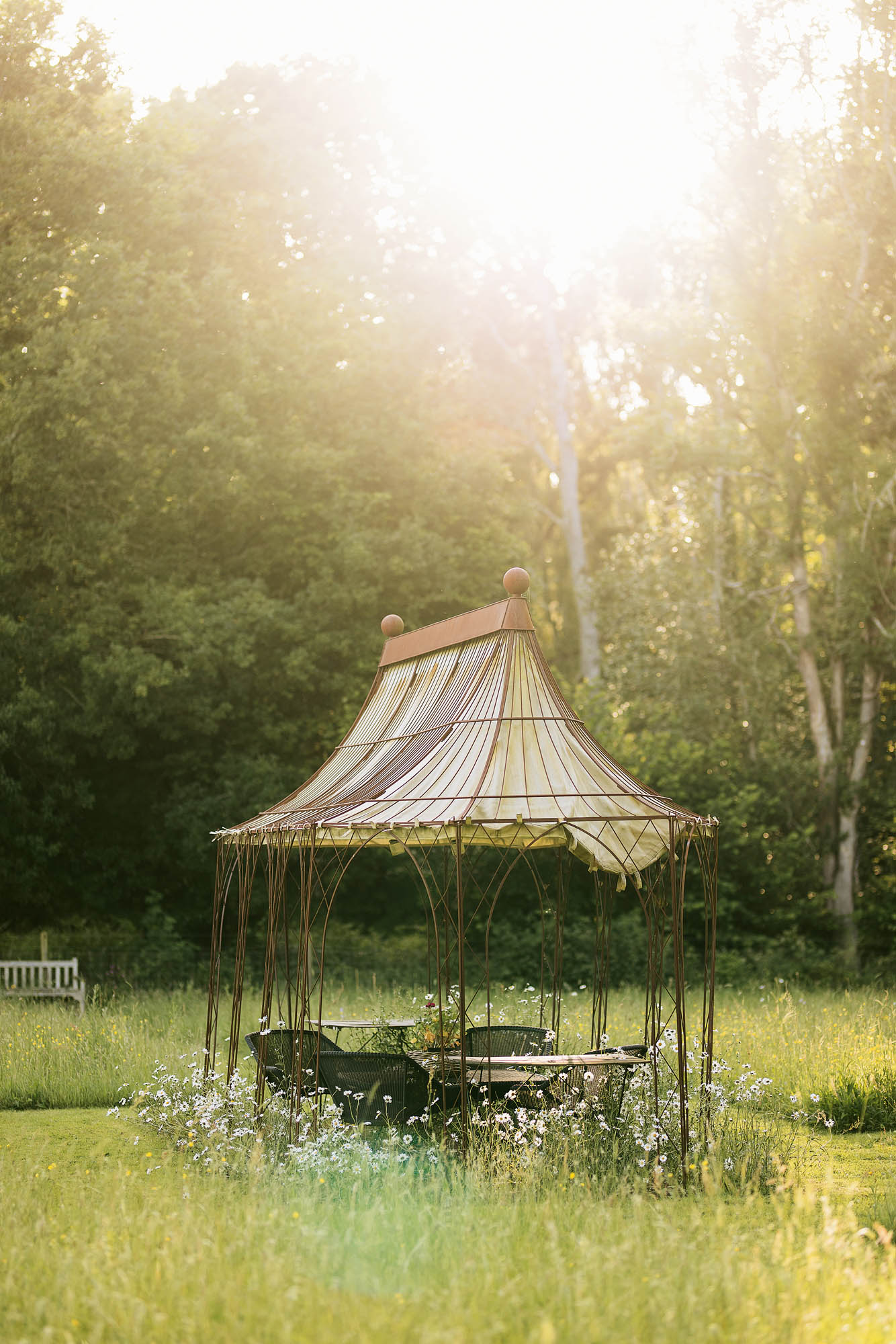
There are two distinctly different moods to the gardens at the front and the back of the central 16th-century farmhouse. The expansive front garden is surrounded by soft, red, ironstone walls — they had totally tumbled down when the new owners arrived — and reflects the slightly grander stone cladding and south-facing aspect of this side of the house. ‘My husband [photographer Henry Bourne] loves sunshine, but I’m Scottish and prefer to sit in the shade at the back of the house, which is the original brick and stone and looks like a higgledy-piggledy timber-frame cottage.’
The front garden has a graceful French feel that reminds me of the enchanting fête champêtre in Alain-Fournier’s Le Grand Meaulnes. (Clearly, this is an amazing place for a party.) Timeless box parterres anchor the blocky shape of the house, pale-pink and luminous red roses are draped over every structure and self-seeded foxgloves and hazy love-in-a-mist dance freely through the curving borders. A majestic copper beech towers over a lawn peopled by gnarled old apple trees, a magnificent walnut and younger plums and greengages.
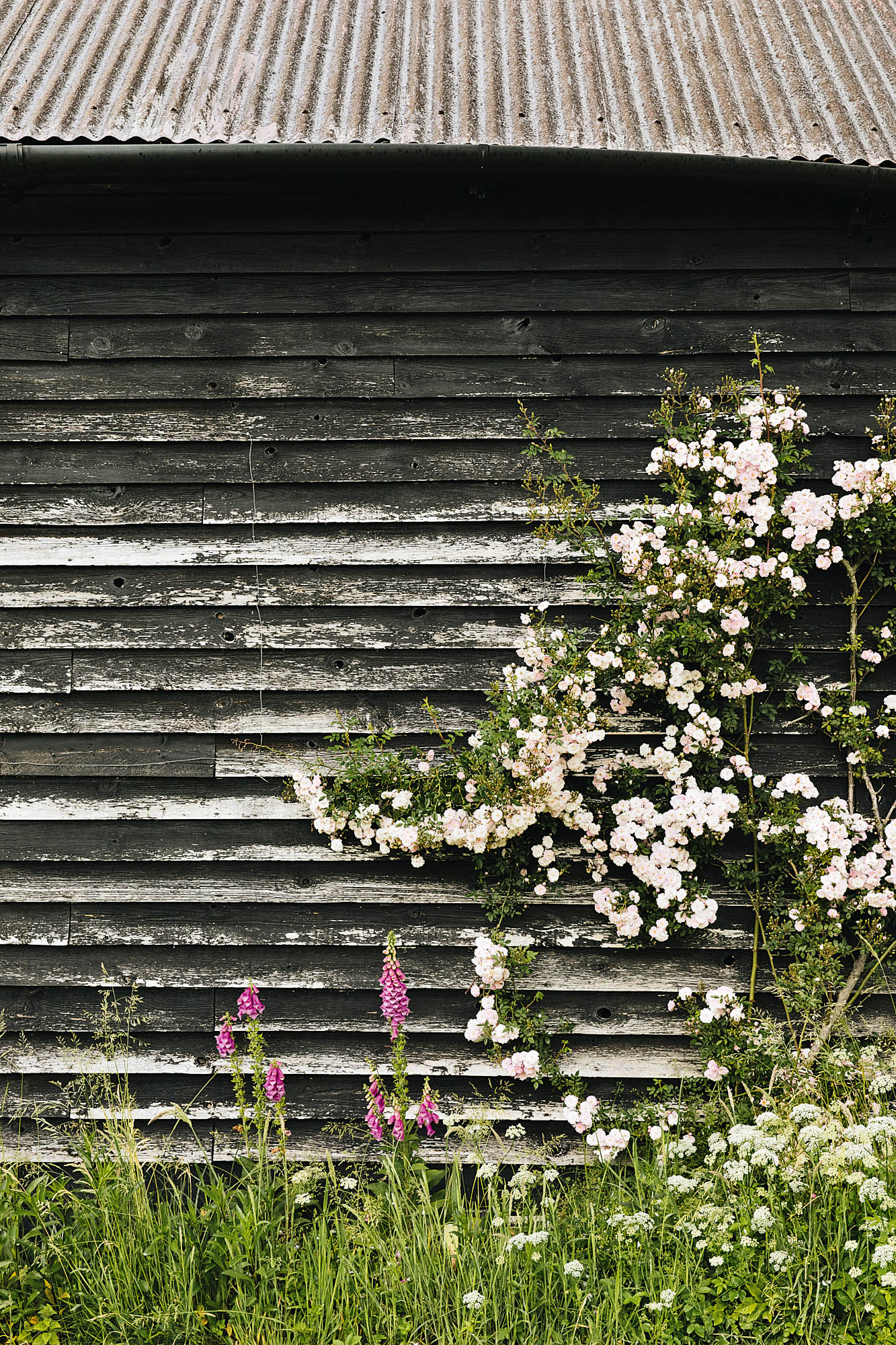
Against the house, the brick terrace is a nestling place soft with wisteria, box and hydrangeas. There is a pretty Indian parasol, a stone dog on a table found in a junk shop and an old urn spilling over with lacy Erigeron karvinskianus. Flowers are grey, mauve, white and pink. ‘Absolutely no yellow or orange — I had orange hessian wallpaper when I was young, which I loathed.’ The inky Salvia ‘Nachtvlinder’ and chocolatey Scabiosa ‘Black Cat’ offer dark accents, but the overall effect is pale and silvery. ‘It looks amazing in the moonlight — it’s utterly magical then with barn owls, moths and lanterns casting shadows.’
Sign up for the Country Life Newsletter
Exquisite houses, the beauty of Nature, and how to get the most from your life, straight to your inbox.
Everywhere are places to read or talk. The swing seat suspended from the cooking-apple tree was made ‘by a friend of ours as a wedding present from me to Henry. We sit here quietly sometimes. It’s heaven when the tree is in blossom and again when Rosa ‘Albertine’ is blooming. ‘Albertine’ is one of my favourites, such a soft, old-fashioned ballet pink.’
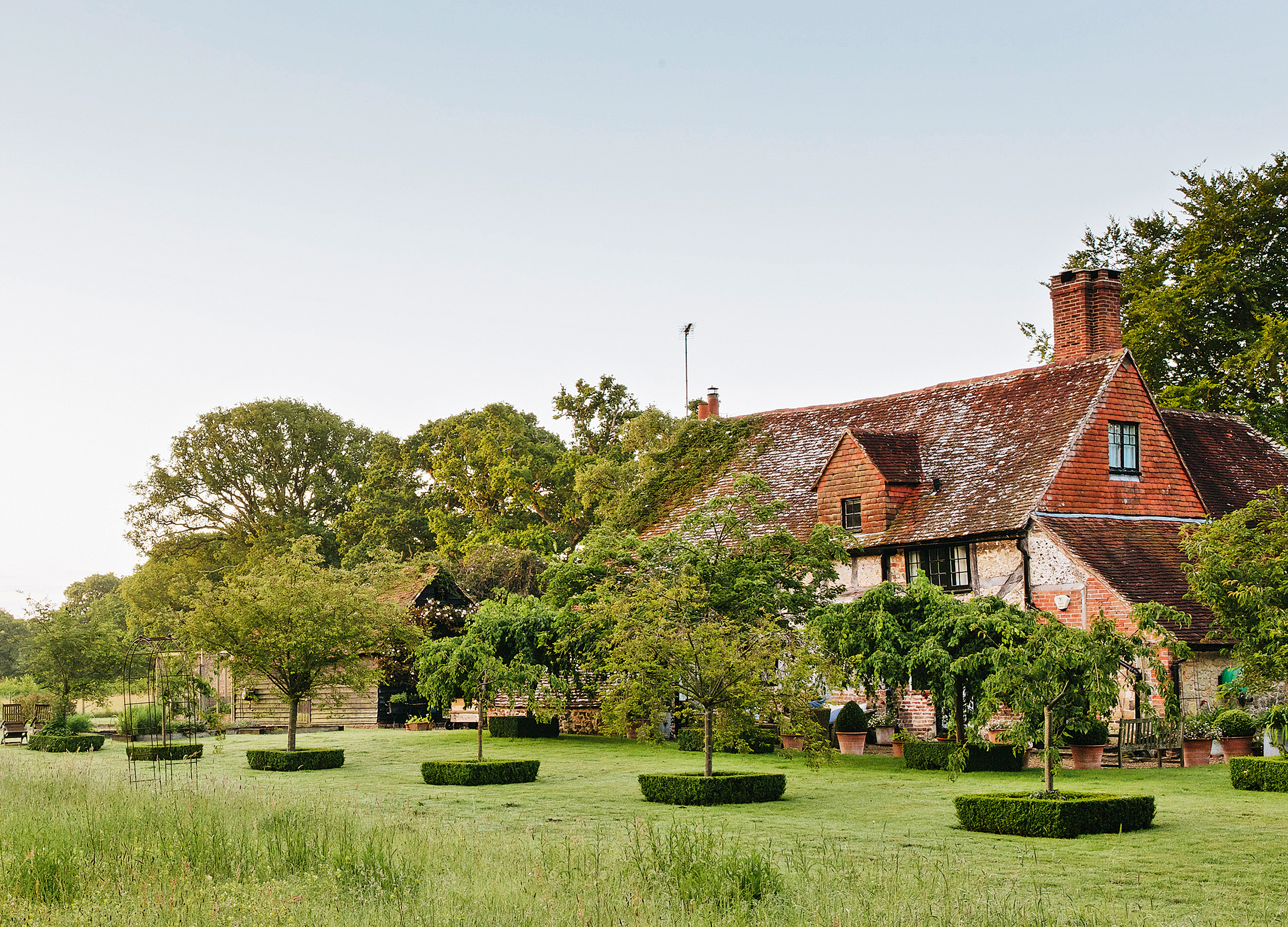
A perfectly ordered potting shed cleverly links the front garden to the back. This is one of Ms Anstruther’s favourite spots: ‘I love to be in here with a cigarette and a coffee with the rain pounding on the roof.’
You emerge from the potting shed to another terrace, where plump-cushioned rattan armchairs invite you yet again to sit. Key to the feeling of welcome is the way the terrace here is protected by a double row of flowering cherry trees emerging shaggily from immaculately clipped box squares. A gardener recently suggested tidying up the canopy of the trees to match the neatness of the box, ‘which goes against everything I have set out to do. I love the déshabillé feel of the trees next to the ordered topiary and then the view out to Nature beyond.’

Behind the cherries is a wildflower meadow now full of orchids, which simply arrived when the grass was left to its own devices. At its centre, a delicate canvas-roofed pavilion emerging from a pool of ox-eye daisies exerts another magnetic pull.
Ms Anstruther firmly believes that you cannot separate house and garden. ‘If you are inside, you are looking out. If you are outside, you are looking in. I once worked on a house where the design of the interior was based on the exterior light bouncing off the lakes. Everything was about reflection.’
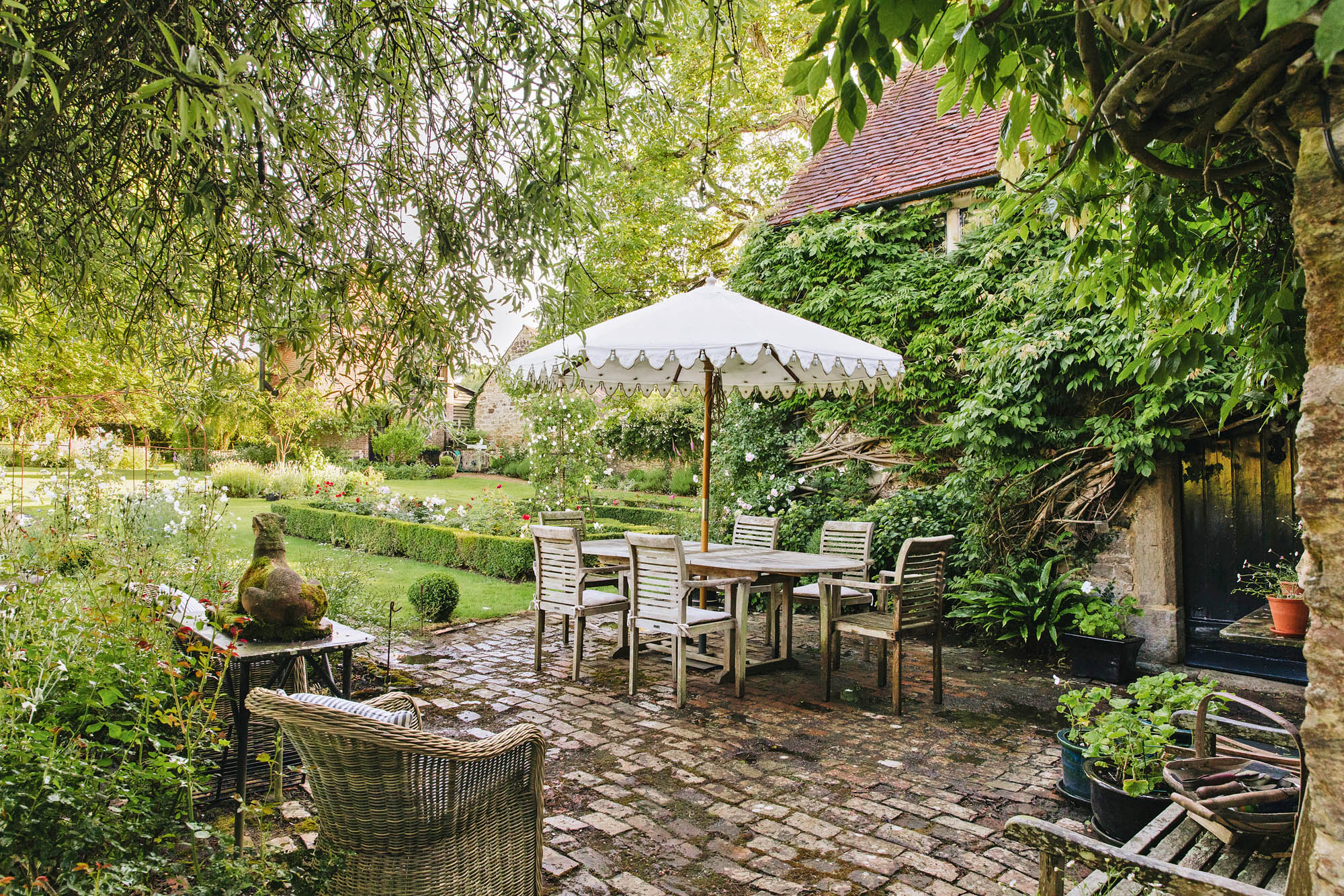
At her Sussex retreat, she has created an enticing garden that wraps seamlessly about its buildings, drawing you endlessly outside to celebrate the blossom or the roses or the way everything is bathed in moonlight. Whatever you are drawn out to admire, she has ensured that there is always somewhere delightful to sit.
-
 Why British designers dream up the most desirable hotels
Why British designers dream up the most desirable hotelsWhen it comes to hotel design, the Brits do it best, says Giles Kime.
By Giles Kime Published
-
 The five minute guide to 'The Great Gatsby', a century on from its publication
The five minute guide to 'The Great Gatsby', a century on from its publication'The Great Gatsby' sold poorly the year it was published, but, in the following century, it went on to become a cornerstone of world literature.
By Carla Passino Published